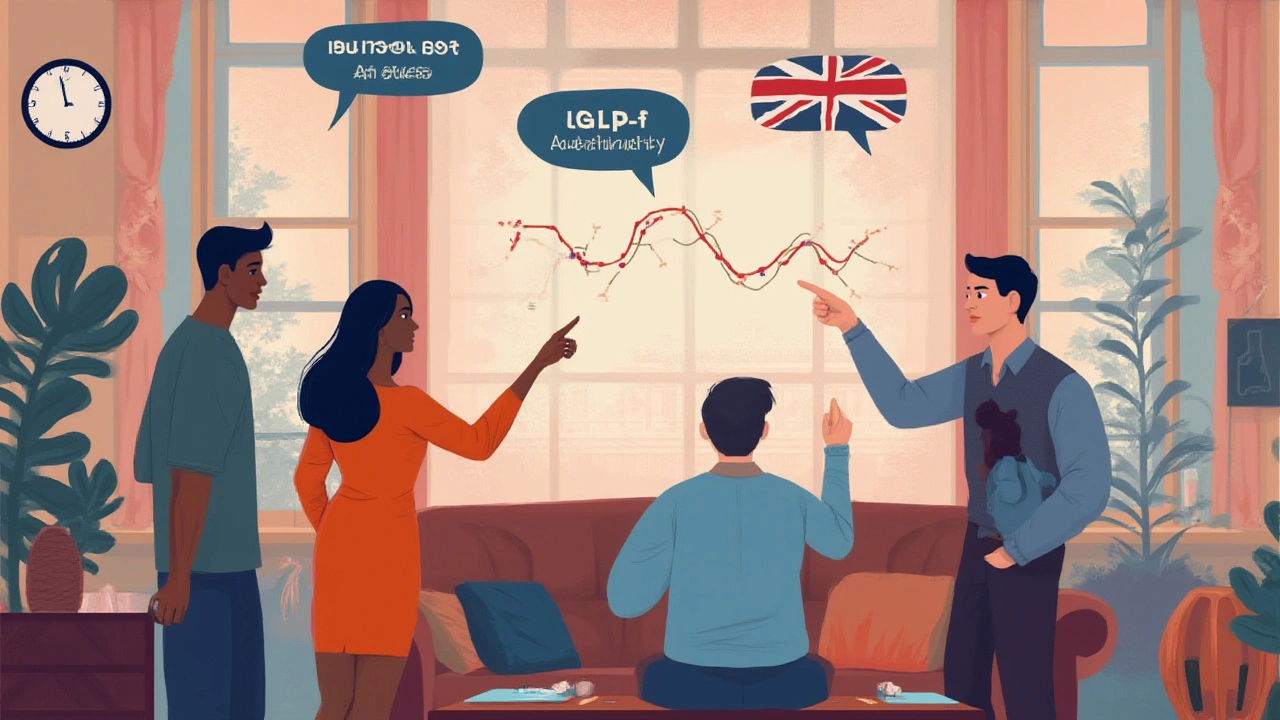Picture this: You’ve finally decided to try prescription weight-loss meds. You want support, trustworthy info, zero judgment, and—crucially—something fast. Scrolling through Canadian telehealth sites, ads for Felix and its rivals promise everything from instant video calls to same-day delivery of GLP-1 medications like Saxenda and Ozempic. Which one actually delivers?
Turnaround Time: The Race from Click to Prescription
Fast doesn’t mean much when your health’s on the line. People looking for weight-loss prescriptions (especially GLP-1s) want answers—and meds—fast. Felix, known for its online-first model, claims a typical turnaround of 24–48 hours from the moment you submit your consult questionnaire to when you see a prescription in your inbox. If your case is straightforward and you’re in a major city, some users even report getting a response within 12 hours (but don’t bank on that).
Let’s see how other players stack up. Maple and Rocket Doctor boast similarly quick timelines—sometimes same-day appointments, if you catch that sweet spot in scheduling. Tia Health and GOeVisit, two names you’ll see everywhere in Canadian telehealth, hover in the 24–48-hour zone, but patients farther from cities or with complicated medical histories often experience longer waits.
Here’s what stands out: Felix skips synchronous (live) video visits for most people starting weight-loss meds unless required by provincial law, while Rocket Doctor or Maple default to a live chat or video. This asynchronous approach means you fill out a questionnaire at 11 PM and might wake up with a message from a doctor the next morning. On the flip side, some find this impersonal and would rather explain their story in a five-minute video.
Delivery times? If you live in Toronto or Vancouver, both Felix and Rocket Doctor can sometimes organize next-day shipping of meds. Maple outsources Rx fulfillment through a network of pharmacies, which may mean an extra day or two—especially for GLP-1 drugs, which require cold shipping.
Speed patients have actually experienced with top providers (2025 estimates):
| Provider | Avg. Consult Time | Avg. Rx Approval (after consult) | Rx Shipping Time (to cities) |
|---|---|---|---|
| Felix | 5–10 min (async forms) | 12–48 hours | 1–2 days |
| Maple | 10–30 min (live/video) | Same-day–48 hours | 1–3 days |
| Rocket Doctor | 10–20 min (live/video) | 12–48 hours | 1–2 days |
| Tia Health | 10–30 min (live/video) | 1–3 days | 2–4 days |
If you like things simple and want the shortest possible wait (without video calls), Felix almost always wins on turnaround time. But that edge can evaporate if you have a complex history, are asking about off-label use, or want a long chat with a prescriber.
Doctor Access: How Easy Is It to Actually Talk to a Doctor?
Shopping for prescription meds online isn’t just about speed; you want to know you’ll get real answers when things get tricky. Felix’s model uses an asynchronous Q&A format. You answer detailed medical questions online; a Canadian-licensed doctor reviews, then follows up with clarifying questions if needed—all in your dashboard or by secure messaging. You may never see their face unless your province demands a live visit.
Maple, Rocket Doctor, and Tia Health are much heavier on live connections. You book a video or phone consult with a doctor and chat in real time about your weight, medical concerns, or side effects. This feels more "old-school clinic" and can put patients at ease—especially first-timers worried about GLP-1 injectables.
What about aftercare? Felix lets you message your assigned provider for 60 days at no extra charge. If you run into side effects or need a dose change, help is just a DM away. With Rocket Doctor and Maple, you usually have to pay for another consult or book a follow-up if things change down the road. Tia Health offers both models but pushes repeat video visits for major changes.
Here are a few useful tips:
- If you want deep dives and real-time reassurance, pick platforms doing video.
- If you're in it for privacy, awkwardness-avoidance, or convenience, Felix’s inbox-style approach is tough to beat.
- If you want ongoing check-ins, calculate total costs. Felix’s post-consult messaging is generous, but if you switch providers later, your portal access disappears.
Some users find that the asynchronous model saves time—no hanging around for your slot and no explaining your story over and over. Others want a face and a voice, especially if they're new to injectables or want to show real-time results (like weight changes or injection-site issues) during a live consult. There isn’t a one-size-fits-all answer, but you can’t really lose: all top providers use fully licensed doctors, and all follow strict Canadian telehealth rules.

GLP-1 Availability: Which Platforms Actually Stock and Prescribe Them?
No weight-loss med has sparked more interest (or confusion) over the past two years than GLP-1 agonists like Ozempic and Saxenda. Not every telehealth provider is able—or willing—to prescribe these drugs off-label for weight loss. Some strictly follow Health Canada’s on-label recommendations. Others may consider off-label use case-by-case, but require more hoops and paperwork.
As of this summer, Felix will initiate GLP-1 therapy for qualifying patients with a BMI over 30, or over 27 with extra risk factors (like high blood pressure or diabetes). They prescribe both Saxenda (liraglutide) and Ozempic (semaglutide), subject to supply. They use a short eligibility form to screen out those who don’t fit Canadian criteria.
Maple and Rocket Doctor also advertise GLP-1 options, but their policies can be stricter. If you don't tick every box—such as failed diet attempts or a formal diagnosis—the process stalls, or you'll be referred to a local specialist. Tia Health and GOeVisit sometimes refer out or only refill GLP-1 drugs, refusing to start new patients entirely when national shortages hit. Right now, shortages can swing overnight, but Felix and Rocket Doctor seem most proactive at helping patients source available stock or find pharmacy alternatives.
There’s a hard truth: Canadian supply of GLP-1 meds is still inconsistent. Saxenda shortages were rampant at the start of 2025, and Ozempic backorders have pushed pharmacies to ration doses or prioritize diabetes patients. Felix updates its patients on current stock before payment, which saves everyone time and heartbreak. Rocket Doctor has a similar transparency policy. Maple sometimes lets patients pay up front before confirming fulfillment, which is a headache if the med is on hold.
Don’t forget about cost. The average retail price for Ozempic in Canada runs $200–$350 monthly, often more for Saxenda, depending on dose and insurance coverage. Most telehealth pharmacies will walk you through applying for savings cards or will work with your insurer directly, but it's worth asking up front. Always ask if your pharmacy will coordinate prior authorizations and direct billing. Doing that yourself can be migraine-inducing.
| Provider | GLP-1s Offered | Refills Available? | New Starts (2025) | Stock Transparency |
|---|---|---|---|---|
| Felix | Ozempic, Saxenda | Yes | Yes | High (live updates) |
| Maple | Ozempic, Saxenda | Yes | Usually, but stricter | Low–Medium |
| Rocket Doctor | Ozempic, Saxenda | Yes | Yes | High |
| Tia Health | Usually refills only | Yes, for existing Rx | No (2025) | Varies |
Want a pro tip? Before you pay any clinic or fill out forms, ask for their latest "med availability" update. And if you’re not sure which service is stocking your med of choice, you can always use the deep comparison over at Felix vs other telehealth weight programs.
Side-by-Side: Unique Perks and Drawbacks to Watch Out For
Let’s not pretend every platform is perfect. Felix is fast and ultra-convenient, but not ideal if you want face-to-face, live advice. Rocket Doctor combines both worlds (asynchronous chat and live options), but this can make their interface clunky, and consults sometimes run late. Maple leads the pack when it comes to breadth—they offer access in French and to more provinces, and they’ll tackle even the oddest of lab requests. However, Maple’s weight-loss program has stricter intake rolling out mid-2025: some self-pay clients might get rejected on the spot if they don't meet specific guidelines.
If you’re on a tighter budget, you’ll care about consult and shipping fees. Felix charges a flat fee for consult and Rx delivery, which makes it easier to budget. Rocket Doctor bundles the doctor visit into your consult charge; pharmacy delivery is extra. Maple separates doctor consult from prescription shipments and refill costs. Everyone offers 1–2 months of aftercare messaging or basic follow-up, but if you want more touch points or a “check-in” every month, prepare for extra fees.
Here’s a quick summary of platform quirks worth thinking about:
- Felix: Fast, seamless, minimal video; best if you like written interaction
- Rocket Doctor: Flexible, live or written; can be slower in peak times
- Maple: Great support, bilingual, but slower for weight-loss approvals and refills
- Tia Health: Best for one-time refills or if you already have an Rx
Patients report that GLP-1 prescription success depends almost as much on your communication style and medical history as on where you apply. If you have a detailed background or previous side effects, upload those docs or mention them up front—most sites can process your case in one go if you’re thorough.

Tips for Picking a Telehealth Service for Weight-Loss Meds in Canada
Choosing a telehealth provider isn't just about picking the biggest name. Different platforms suit different lifestyles and personalities. If you work night shifts or have social anxiety, Felix’s asynchronous option lets you go at your own pace. If you want lots of live support, Maple and Rocket Doctor are the go-tos. For people who want to compare every major provider, especially this year, check out the guide at Felix vs other telehealth weight programs; it's updated with new policies and user stories.
Before you lock in your choice, here are a few reality checks:
- Always read the fine print, especially about refill policies. Some sites only approve one or two months at a time for GLP-1 meds.
- Insurance? Ask before your first consult if they help with forms or offer direct billing.
- If you're switching providers, request your records and upload them to keep things seamless (and reduce delays).
- Ask about shipping timelines and cold-chain handling, since GLP-1s can spoil if mishandled during delivery in summer or winter temps.
- Look for transparency: real-time updates on med stock and doctor assignments stops needless waiting.
One random fact that might surprise you: in 2025, about 65% of GLP-1 prescriptions in urban Canada are now being processed via telehealth (compared to under 10% just three years ago). This is partly because people are so fed up with long in‐person waitlists, plus telehealth providers are now duking it out to offer faster delivery, extra aftercare, slimmer interfaces, and greater privacy. Watch this space, because the choice might only get harder as more players appear and GLP-1 supply improves.


11 Comments
Veronica Rodriguez
Hey folks! 😊 If you’re weighing (pun intended) your telehealth options, start by checking whether the platform updates its GLP‑1 stock in real‑time – Felix does this really well, and it can save you a lot of back‑and‑forth. Also, look at the after‑care window: Felix offers 60‑day messaging at no extra charge, which is a nice safety net if you run into side‑effects or need a dose tweak. Make sure your provincial coverage is factored in; some insurers will only reimburse if you have a documented BMI ≥ 30 or specific comorbidities. Finally, keep an eye on shipping times and cold‑chain handling, especially if you live in a region with extreme temperatures.
Holly Hayes
Honestly, if you can’t handle a quick form, maybe telehealth isn’t for you.
Matthew Shapiro
Good points above. Adding to that, the consult duration differences matter: a 5‑10 minute async questionnaire (as Felix offers) can be a real time‑saver compared to a 10‑30 minute live video call on Maple. Just remember that a longer face‑to‑face interaction might feel more reassuring for first‑time GLP‑1 users.
Julia Phillips
I totally get the anxiety of starting a new medication without seeing a doctor’s face. That’s why I appreciate platforms that blend cultural sensitivity with clear explanations – Maple’s bilingual support is a lifesaver for many. Yet, the asynchronous style can feel a bit cold, especially when you’re nervous about injections. If you can juggle a quick video chat for the initial session and then switch to messaging for follow‑ups, you get the best of both worlds.
Richa Punyani
Dear esteemed readers, allow me to present a comprehensive perspective on the nuanced selection of telehealth services for GLP‑1 therapy, framed within a formal discourse. Firstly, the temporal efficiency of the consult process warrants meticulous scrutiny; a streamlined asynchronous questionnaire, as exemplified by the entity Felix, reduces patient‑provider latency to a commendable five to ten minutes, thereby conserving invaluable temporal resources. Secondly, the regulatory compliance of each platform with provincial health statutes must be affirmed, particularly concerning the requisite documentation of body‑mass index thresholds and comorbid risk factors. Thirdly, the logistics of medication dispensation, notably the maintenance of a cold chain for semaglutide and liraglutide, remain paramount; any deviation could compromise pharmacologic integrity. Fourthly, transparency in inventory status, a hallmark of Felix and Rocket Doctor, furnishes patients with real‑time insight, mitigating the emotional distress associated with unexpected stock shortages. Fifthly, the fiscal architecture of these services deserves acute attention: flat‑fee consult charges, as employed by Felix, provide budgeting clarity, whereas ancillary fees for expedited shipping or repeat video consultations, observed in alternative providers, may precipitate unforeseen expense. Sixthly, post‑prescription support structures, including the duration of complimentary messaging, vary considerably; a sixty‑day window, as offered by Felix, enhances adherence monitoring. Seventhly, the cultural competence of platforms, exemplified by Maple’s bilingual capabilities, serves to bridge linguistic divides within Canada’s diverse populace. Eighthly, the clinical acumen of prescribers, particularly their proficiency in managing GLP‑1 side‑effects such as nausea or injection‑site reactions, is integral to therapeutic success. Ninthly, the adaptability of the service to evolving patient histories must be considered; providers allowing seamless uploading of prior medical records expedite subsequent consultations. Tenthly, the ethical considerations surrounding off‑label prescriptions for weight management, in alignment with Health Canada guidelines, must be transparent to the patient. Eleventhly, the integration with provincial insurance schemes, including assistance with prior authorizations, can substantially alleviate administrative burdens. Twelfthly, the reliability of pharmacy partners, especially during nationwide shortages, dictates the continuity of treatment. Thirteenthly, the user‑interface design, balancing simplicity with comprehensive data capture, influences patient engagement. Fourteenthly, the availability of emergency contact pathways for acute adverse reactions cannot be understated. Finally, a holistic appraisal of these dimensions, calibrated to individual patient preferences-whether prioritizing speed, personal interaction, cultural congruence, or financial predictability-will empower informed decision‑making in the pursuit of optimal GLP‑1 therapy.
Bhupendra Darji
Thanks for the thorough rundown! I’d add that uploading recent labs can shave off a day or two from the approval stage.
Robert Keter
Indeed, the act of pre‑uploading one's laboratory results and prior imaging reports serves as a catalyst for expediting the provider’s review process, especially when dealing with complex metabolic histories. Moreover, when a patient presents with a documented history of pancreatitis, the prescribing clinician must undertake a rigorous risk‑benefit analysis, often necessitating supplemental documentation, which, if already present in the portal, forestalls delays. It is also prudent to verify that the pharmacy partnered with the telehealth service maintains an FDA‑equivalent cold‑chain protocol; any lapse could render the GLP‑1 formulation ineffective. Furthermore, the inclusion of a personalized dosing titration plan within the initial consult note not only streamlines subsequent follow‑ups but also reassures the patient regarding the anticipated progression of therapy. The platform’s capacity to generate automated refill reminders, synchronized with the patient’s dosing schedule, dramatically reduces the likelihood of missed doses. In addition, opting for a service that offers a dedicated nurse line-available 24/7-can provide immediate guidance for side‑effects, circumventing the need for an emergency department visit. Lastly, an awareness of provincial drug formularies can uncover subsidized avenues for GLP‑1 acquisition, thereby attenuating out‑of‑pocket costs for the patient.
Rory Martin
All these platforms are secretly tracking your health data for unknown purposes.
Maddie Wagner
Friends, remember that the journey to better health is as much about community support as it is about the medication itself. While Felix’s speed is impressive, the emotional comfort of a live conversation can be a powerful motivator for adherence. If you’re feeling hesitant, consider pairing your telehealth choice with a peer‑support group-many online forums exist where members share dosing tips and coping strategies.
Boston Farm to School
Good advice, especially the part about community backing.
Emily Collier
Ultimately, the best telehealth service aligns with your personal preferences, budget, and health goals; stay optimistic and keep moving forward.